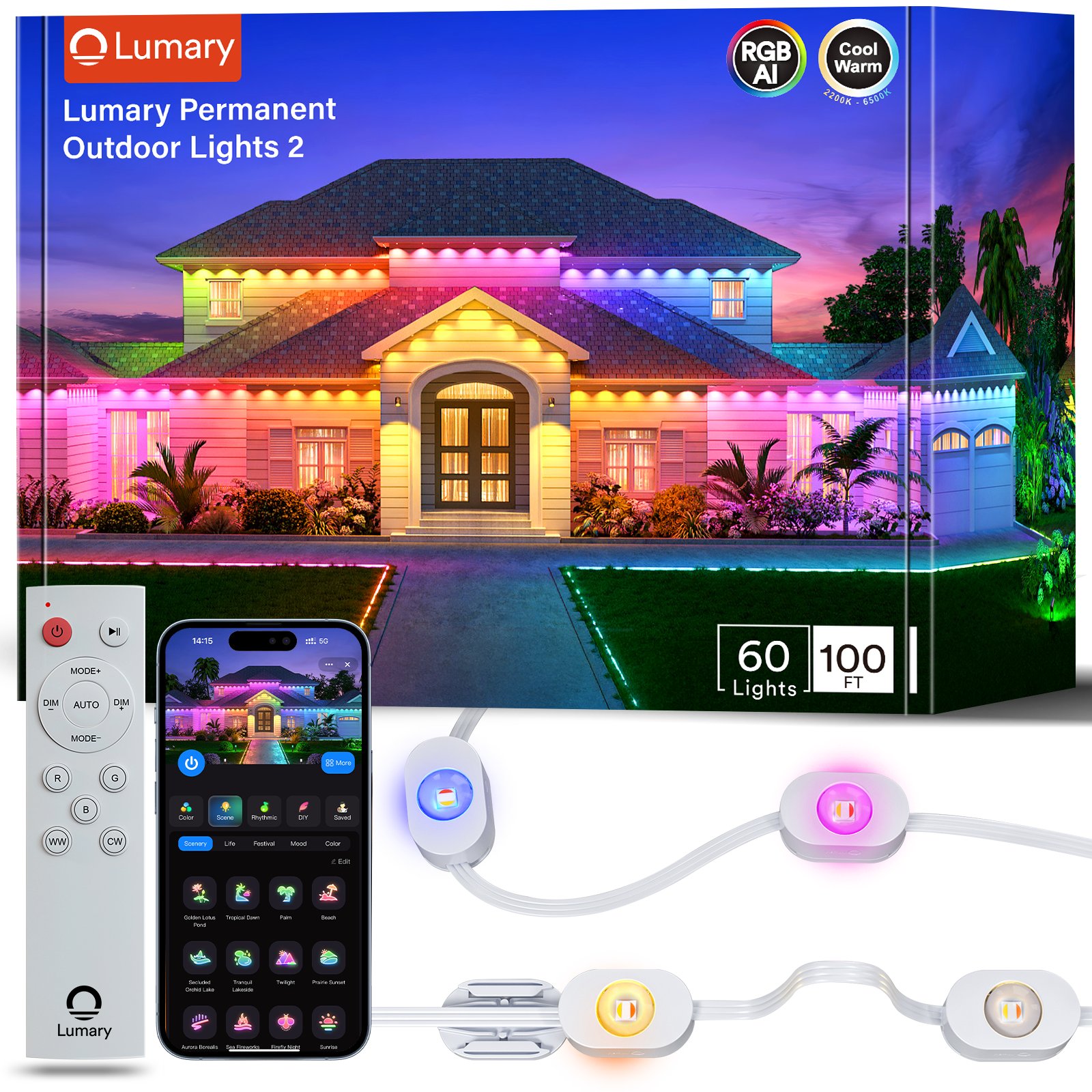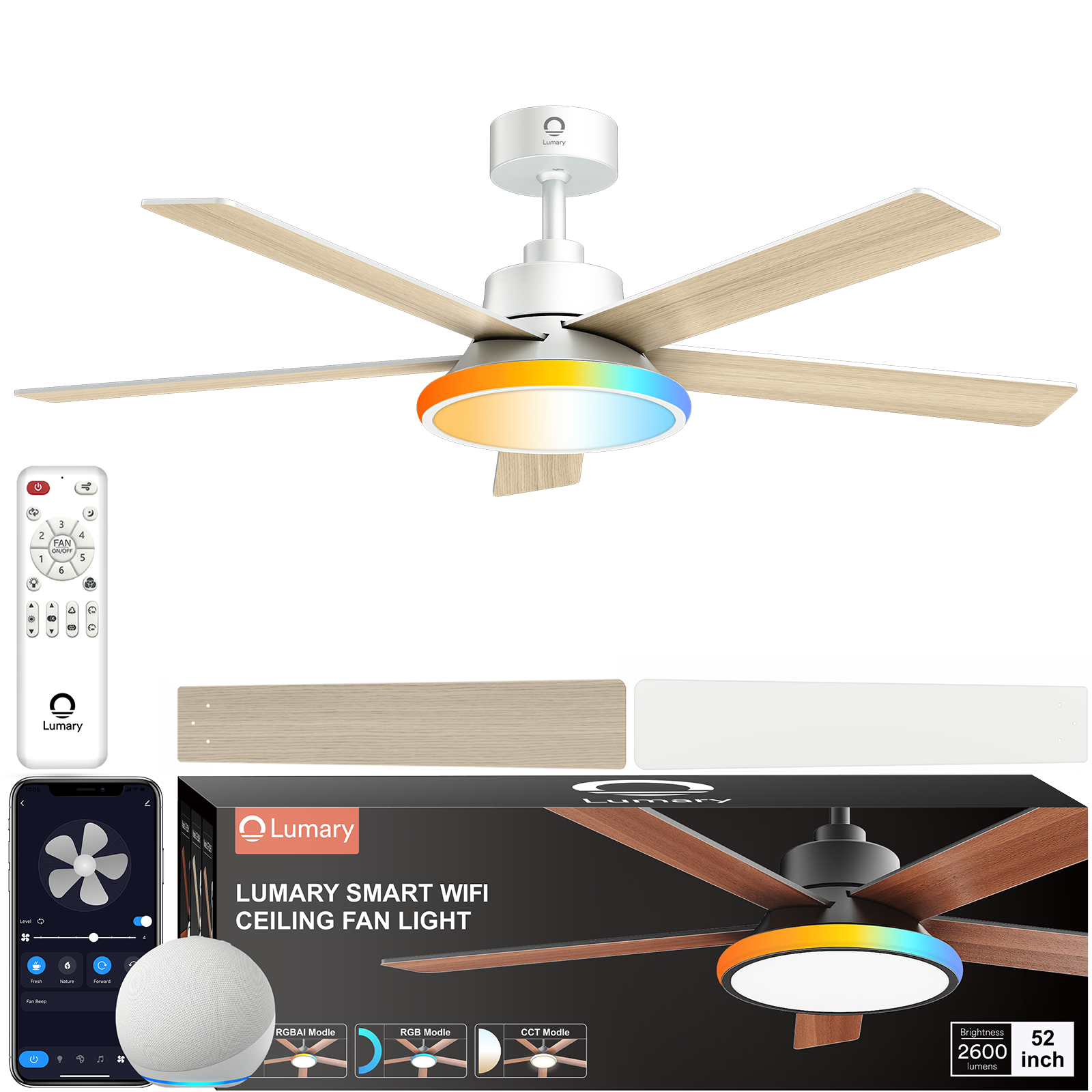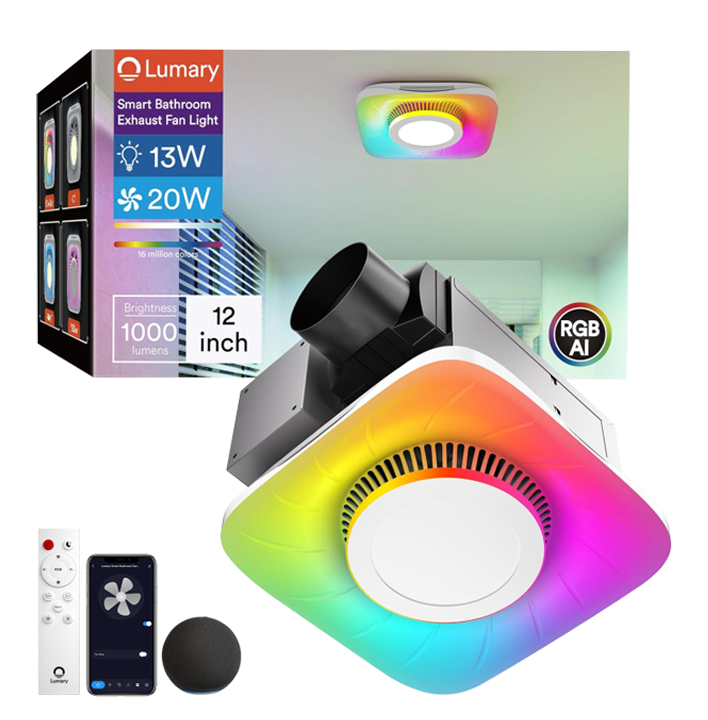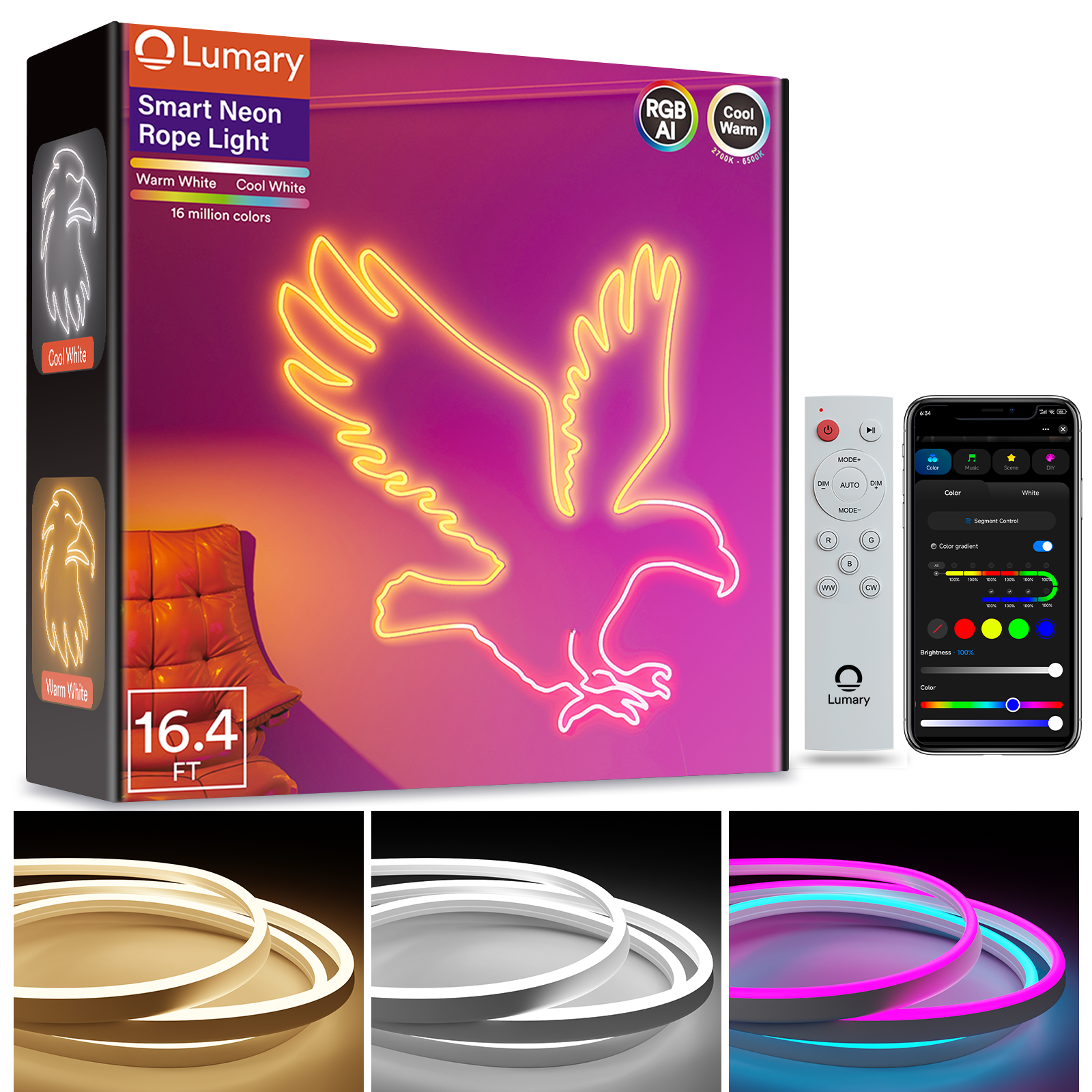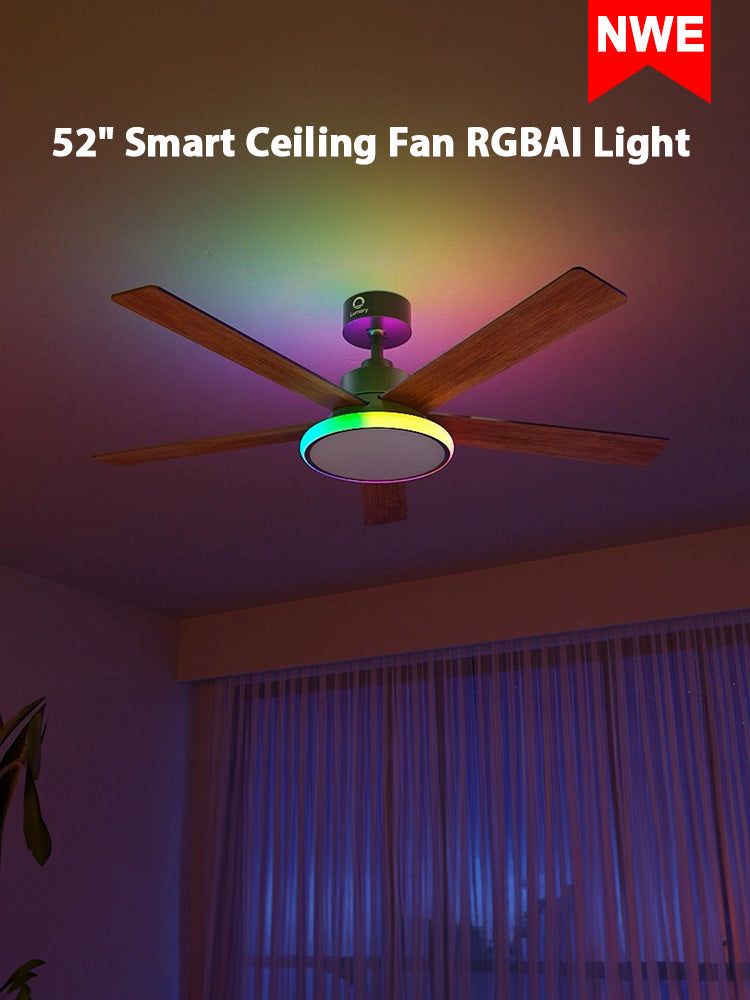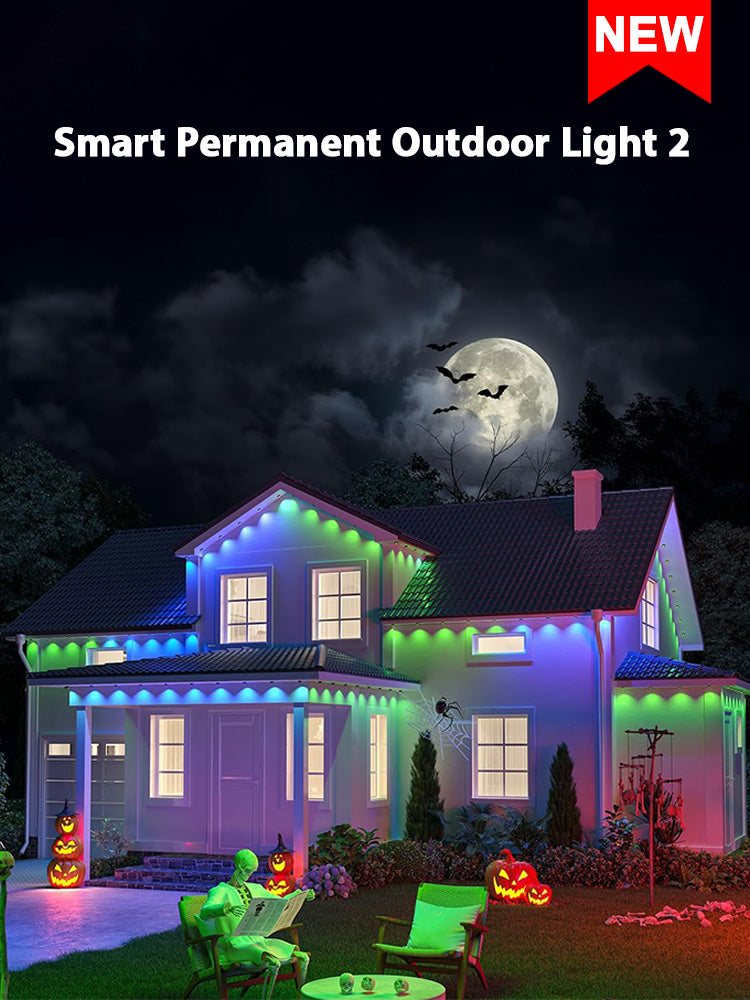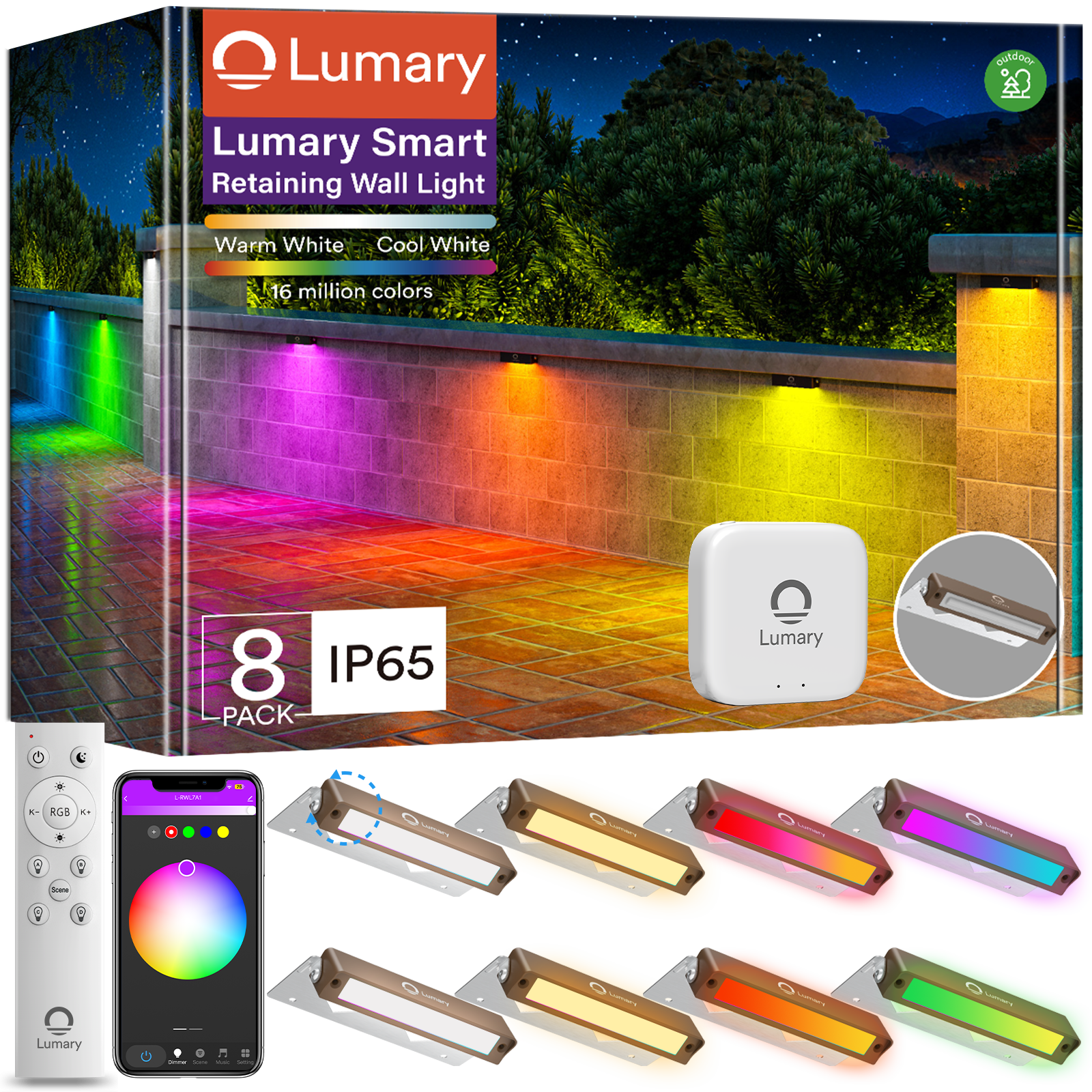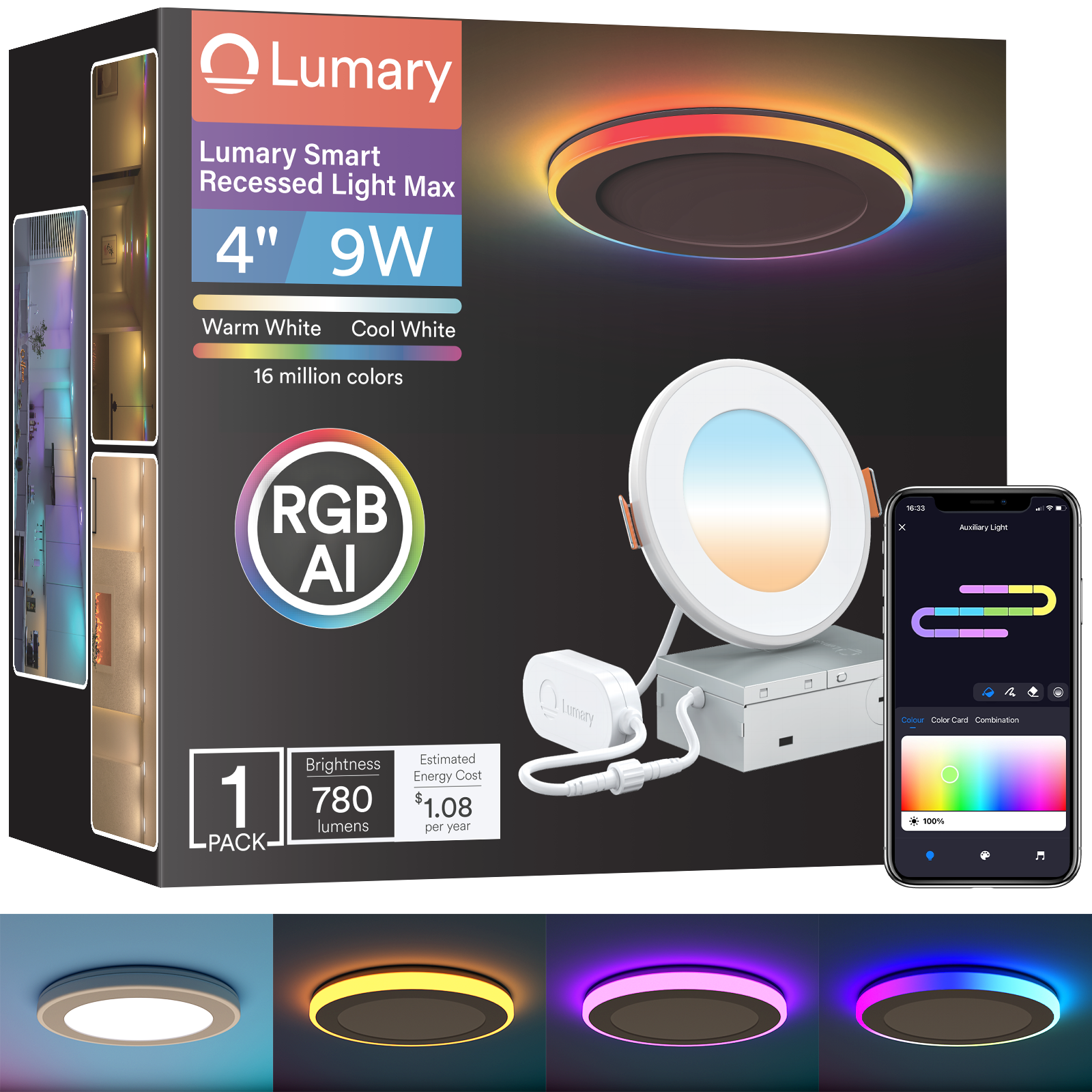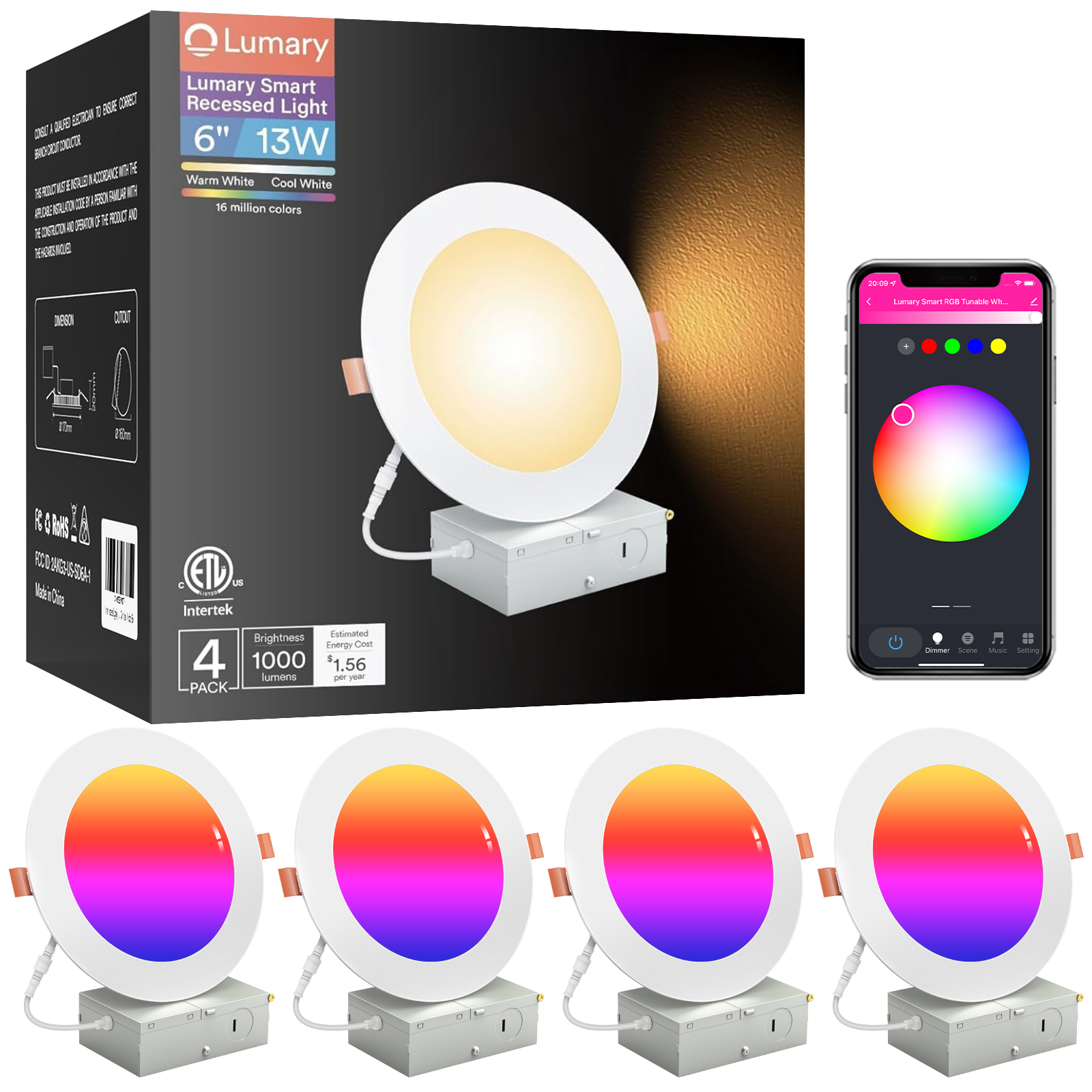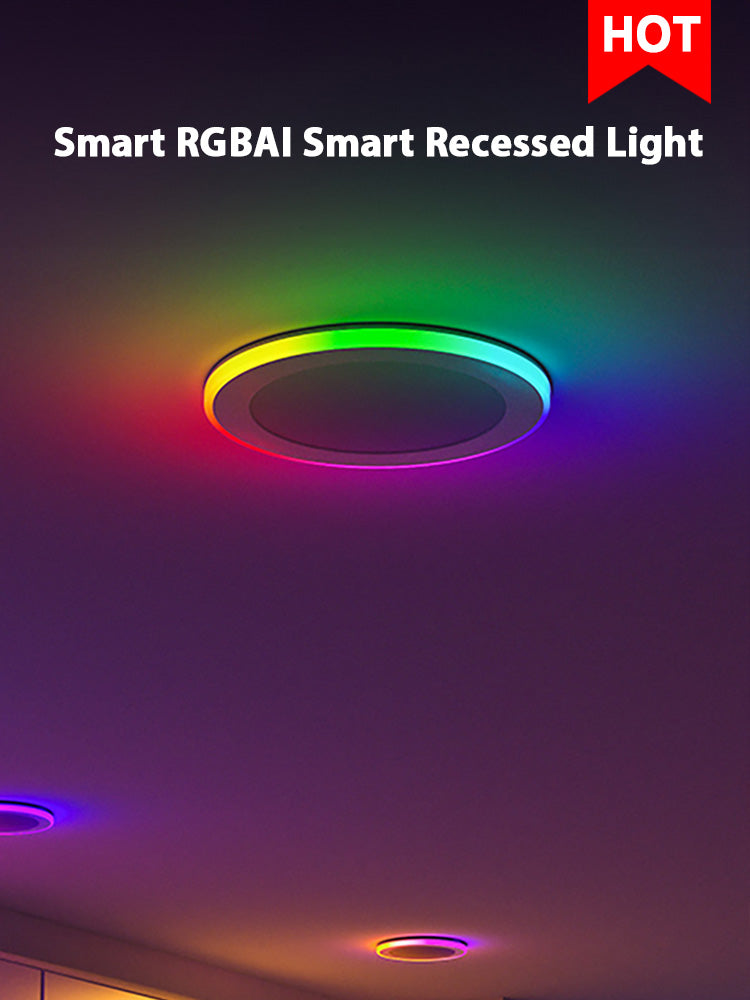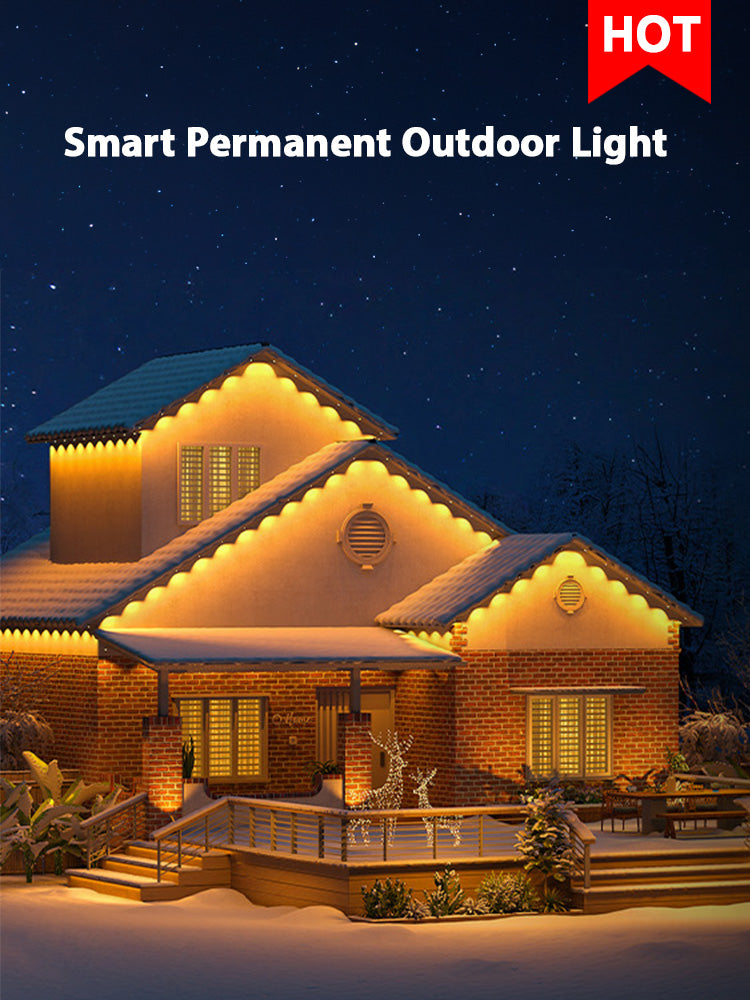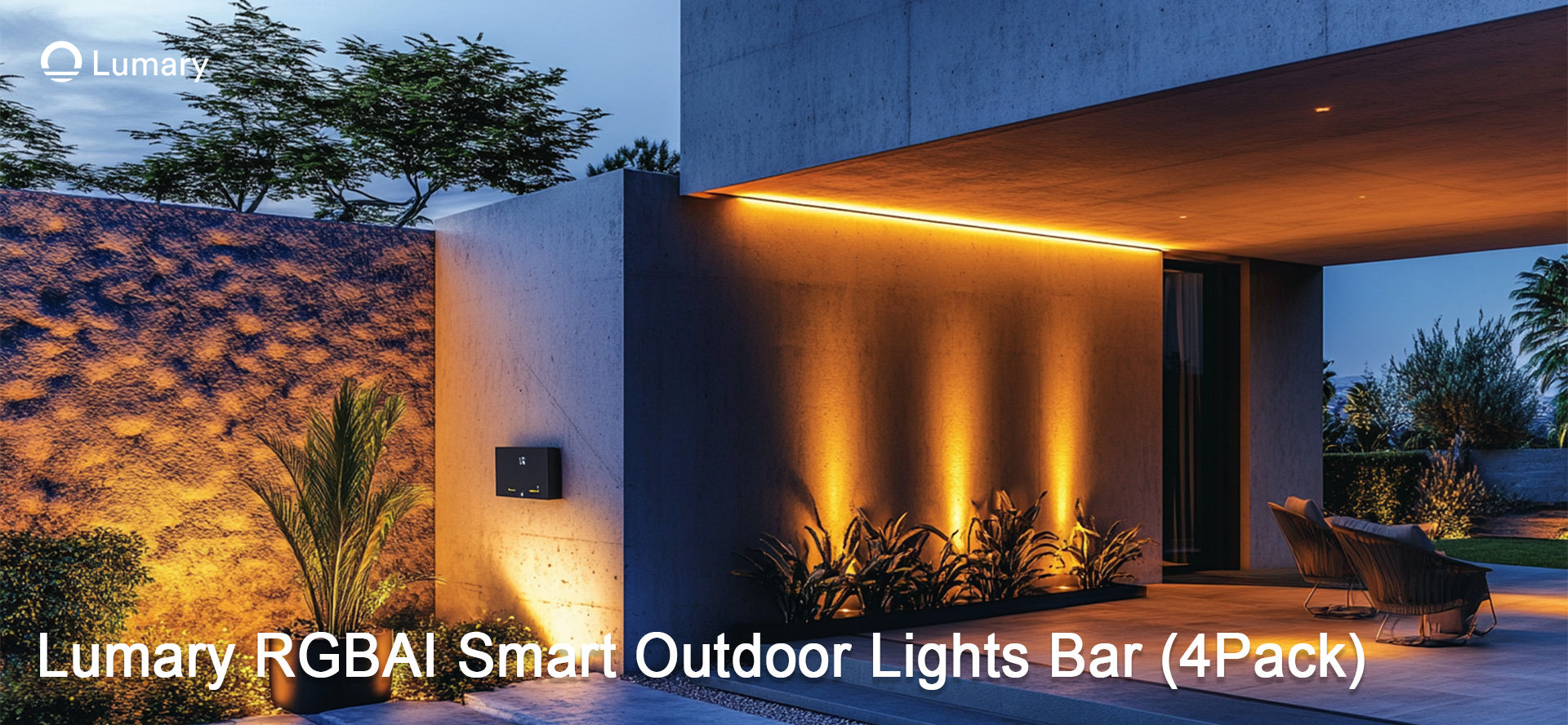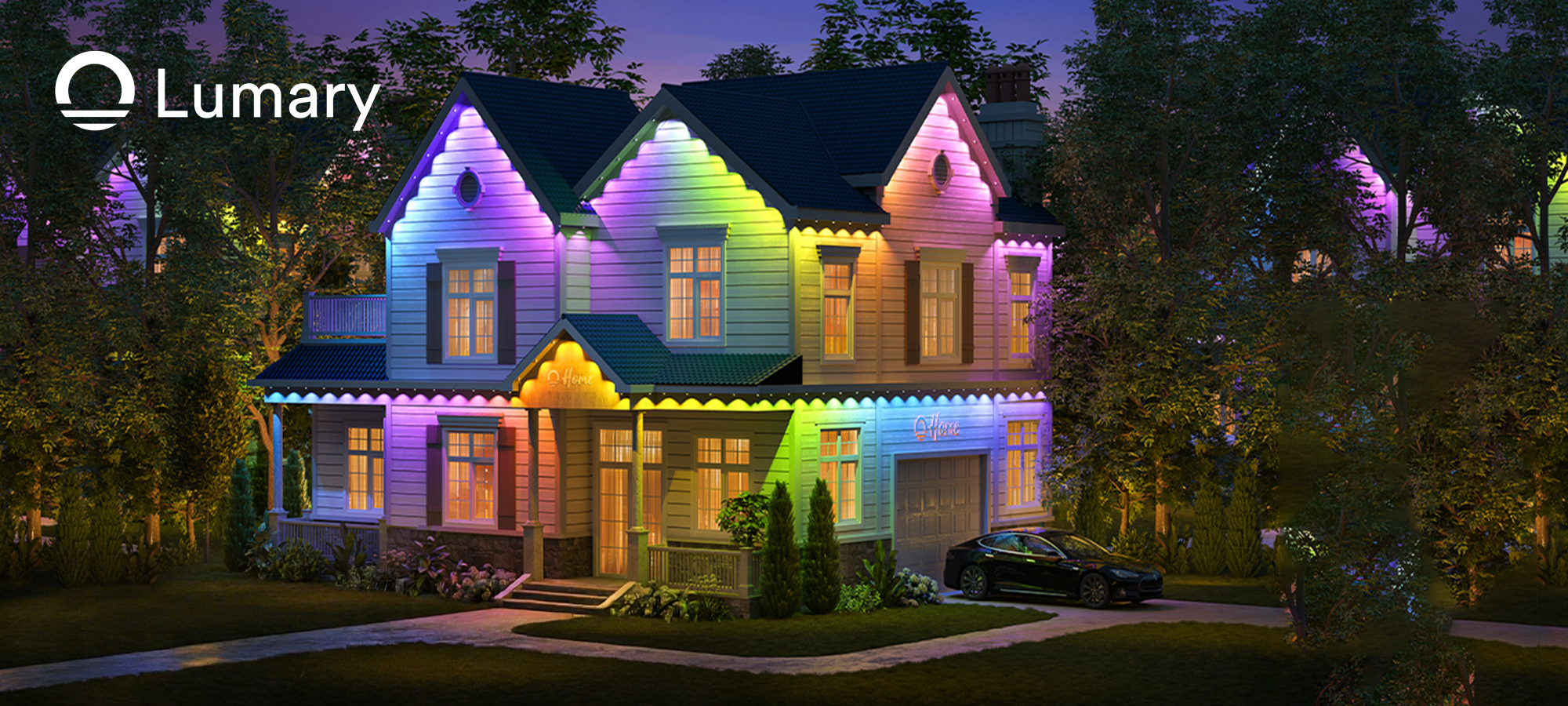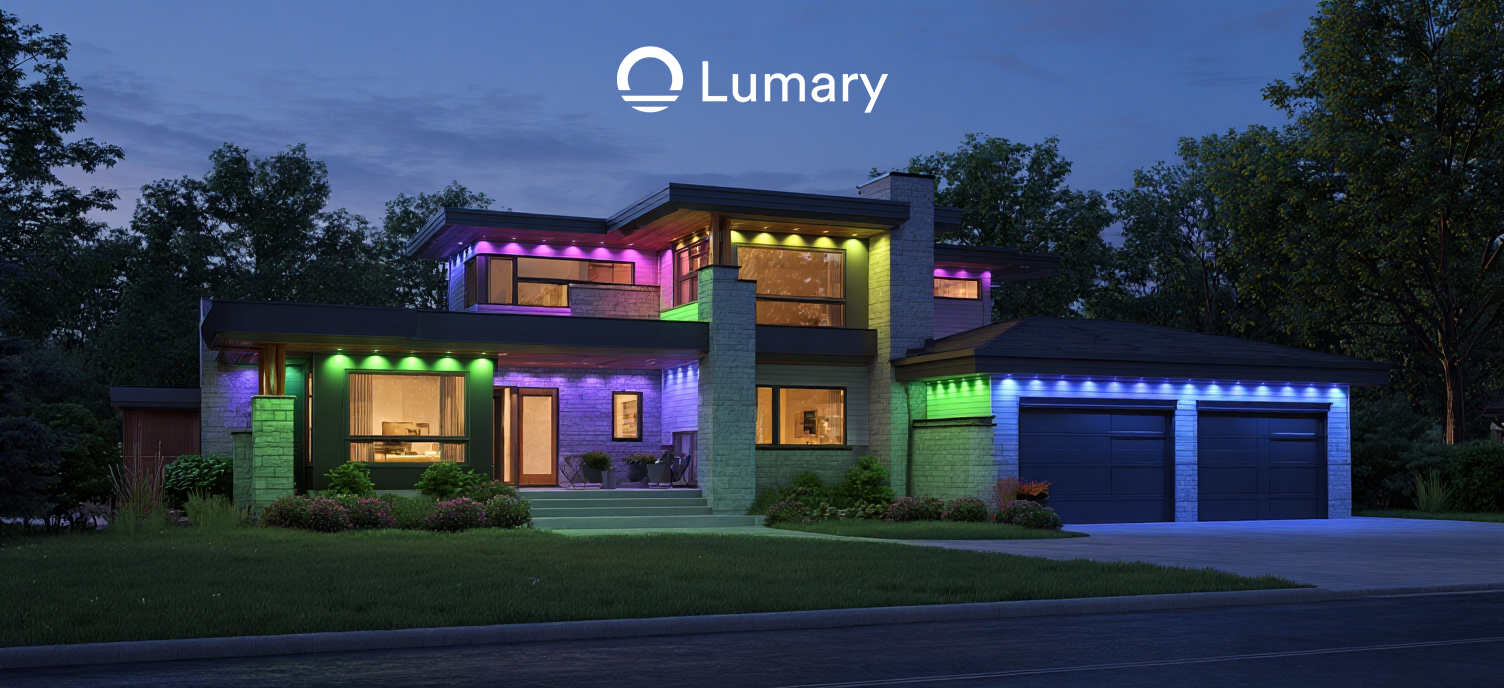Outdoor waterproof LED lights play a vital role in enhancing your home’s safety and aesthetics. Nearly half of homebuyers value exterior lighting as a desirable feature, with 41% considering it essential. These lights offer weather resistance, ensuring consistent performance during rain or snow. Their sealed designs reduce electrical hazards, making them a reliable choice for critical areas. However, challenges like water ingress or overheating can arise. Address these by selecting proper IP-rated fixtures and ensuring adequate ventilation. Brands like Lumary, Philips, and Cree provide trusted options for durable and efficient lighting solutions.
Key Takeaways

-
Learn about IP ratings to pick waterproof LED lights. Higher IP ratings, like IP65 or IP66, block dust and water. These are great for outdoor areas.
-
Pick the right brightness for your outdoor spaces. Lumens show how bright a light is. Choose lights for patios, paths, or gardens based on their needs.
-
Use flexible LED strip lights for creative designs. Measure your space carefully. Make sure the lights fit around curves and corners for a unique look.
-
Save energy by choosing LED lights with Energy Star labels. These lights lower electricity bills and help the environment. They also last a long time.
-
Install lights correctly to keep them safe and working well. Use proper tools and check power source compatibility. Smart home features can make them easier to use.
Step 1: Understand IP Ratings for Outdoor Use
What Are IP Ratings?
IP ratings, or Ingress Protection ratings, measure how well a device resists solid objects and moisture. These ratings are crucial for waterproof LED lights, especially for outdoor use. The rating consists of two digits. The first digit indicates protection against dust and dirt, while the second digit measures resistance to water. A higher IP rating means better protection.
Common IP Ratings for Waterproof LED Lights
When choosing waterproof LED lights, you’ll often encounter ratings like IP65, IP66, and IP67. For most outdoor lighting needs, IP65 is a reliable choice. It protects against dust and low-pressure water jets, making it suitable for building facades, patios, and parking lots. IP66 offers enhanced protection, handling high-pressure water jets, ideal for industrial areas. If you need lights near swimming pools or fountains, IP67-rated fixtures can withstand temporary submersion in water.
|
IP Rating |
Dust Protection |
Water Protection |
Typical Use Cases |
|---|---|---|---|
|
IP65 |
Safe from dust |
Low-pressure water jets |
Building facades, sports areas, parking lots |
|
IP66 |
Safe from dust |
High-pressure water jets |
Shipyards, industrial plants |
|
IP67 |
Safe from dust |
Submersible up to 1 meter |
Pools, fountains, marine environments |
Choosing the Right IP Rating for Your Environment
Select an IP rating based on your environment. For areas exposed to rain or snow, IP65-rated waterproof LED lights provide excellent protection. In regions with heavy rainfall or harsh weather, IP66 ensures durability. For spaces near water features, IP67-rated lights are the best option.
Why IP Ratings Matter for Outdoor Waterproof LED Lights
Protection Against Rain, Snow, and Dust
IP ratings ensure your outdoor waterproof LED lights can handle environmental challenges. They prevent moisture intrusion and dust accumulation, which can cause short circuits or flickering. For example, IP65-rated lights resist rain and dust, making them ideal for outdoor use.
Ensuring Durability in Harsh Conditions
Durability is essential for outdoor lighting. Insufficient IP ratings can lead to corrosion, fixture failure, and frequent replacements, increasing costs. Properly rated lights, like IP65 or higher, guarantee a longer lifespan and consistent performance, even in extreme weather.
Tip: Always check the IP rating before purchasing small waterproof LED lights to ensure they meet your outdoor lighting needs.
Step 2: Determine the Right Brightness for Outdoor Spaces
Understanding Lumens for Outdoor Use
How Lumens Measure Brightness
When choosing waterproof LED lights, understanding lumens is essential. Lumens measure the visible light output of a bulb, unlike watts, which indicate energy consumption. For example, a standard 40-watt bulb produces over 400 lumens. Modern LED waterproof lights provide higher brightness with lower wattage, making them energy-efficient and cost-effective. This shift from watts to lumens ensures you can accurately assess the brightness of your outdoor lighting.
Recommended Lumens for Different Outdoor Areas
Different outdoor spaces require varying brightness levels. Use the following table as a guide to select the appropriate lumen range for your needs:
|
Fixture Type |
Lumen Range |
|---|---|
|
Outdoor Wall Lights |
400 - 1200 lumens |
|
String Lights |
50 - 100 lumens |
|
Landscape Lights |
50 - 300 lumens |
For specific applications:
-
Step lights: 12-100 lumens
-
Path lights: 100-200 lumens
-
Motion sensor lights: 300-700 lumens
Choosing Brightness for Specific Spaces
Patios and Decks: Warm, Ambient Lighting
Patios and decks benefit from warm, ambient lighting. Small waterproof LED lights with 400-600 lumens create a cozy atmosphere for gatherings. Choose fixtures with adjustable brightness to match different occasions. For example, the Lumary RGBAI Smart Outdoor Lights Bar offers customizable lighting scenes, perfect for patios.
Pathways and Driveways: Focused, Bright Lighting
Pathways and driveways require focused lighting for safety. Use waterproof LED lights with 1,200-2,400 lumens for driveways and 100-200 lumens for pathways. Motion sensor lights enhance security while conserving energy. Install these lights along walkways to ensure visibility and prevent accidents.
Gardens and Landscaping: Decorative, Subtle Lighting
Gardens and landscaping thrive with decorative lighting. Use small waterproof LED lights with 50-300 lumens to highlight plants and features. Flexible options like the best outdoor LED strip lights allow you to customize designs. These lights add charm without overpowering the natural beauty of your garden.
Tip: Balance brightness and energy efficiency by using LED lights, timers, and motion sensors. These practices reduce energy consumption while maintaining high-quality outdoor lighting.
Step 3: Choose Outdoor LED Strip Lights Based on Size and Flexibility
Measuring Your Space for the Best Outdoor LED Strip Lights
Tips for Accurate Measurements
Accurate measurements are essential when you choose outdoor LED strip lights. Start by measuring the total length of the area where you plan to install the lights. Include curves or corners in your calculations if the space isn’t straight. Flexible LED strips are ideal for such spaces. Always add a little extra length to your measurements to allow for adjustments during installation. This ensures complete coverage and avoids gaps.
Consider other factors like brightness, color temperature, and energy efficiency. For example, small waterproof LED lights with a warm color temperature (measured in Kelvins) create a cozy ambiance, while brighter options enhance safety. Also, ensure the lights have an IP65 rating or higher for outdoor use.
Pro Tip: Test the lights before final installation to make adjustments and confirm they meet your expectations.
Avoiding Overcrowding or Under-lighting

Overcrowding can make your outdoor lighting look cluttered, while under-lighting leaves areas dim and unsafe. Plan your layout carefully. Highlight key features like pathways or garden edges and ensure uniform lighting. Double-check your measurements to avoid LED strips too short or leaving sections unlit.
Fixed vs. Flexible Waterproof LED Lights
Benefits of Flexible LED Strips for Customization
Flexible LED strips offer unmatched versatility. You can install them around curves, corners, or tight spaces. This makes them perfect for creative designs in gardens or patios. Their adaptability allows you to highlight unique architectural features or landscaping elements.
When to Use Fixed LED Lights
Fixed LED lights work best for straight, uniform installations. They provide consistent lighting for pathways, driveways, or walls. These lights are less customizable but offer excellent durability and stability in harsh outdoor conditions.
Matching Style and Design
Aesthetic Considerations for Outdoor Use
When selecting waterproof LED lights, consider their style and how they complement your outdoor space. Warm white lights create a cozy atmosphere, while RGB options add a decorative touch. Match the brightness and color to the mood you want to achieve.
Popular Trends in Outdoor LED Lighting
Current trends include using the best outdoor LED strip lights for layered lighting. Combine small waterproof LED lights with brighter fixtures to create depth and dimension. Solar-powered options are also gaining popularity for their energy efficiency and sustainability. Look for high-quality options with UV-resistant materials to ensure durability.
Step 4: Prioritize Energy Efficiency and Power Options
Comparing Power Sources for Outdoor Waterproof LED Lights
Solar-Powered LEDs: Pros and Cons
Solar-powered LED lights are an excellent choice for energy-conscious homeowners. These lights charge during the day using photovoltaic cells and illuminate your yard at night. They eliminate the need for wiring, reducing electricity usage and installation complexity. Solar-powered options are ideal for areas with ample sunlight. However, they may not perform well in shaded spaces or during extended cloudy periods.
Plug-In LEDs: Best Applications
Plug-in LED waterproof lights provide consistent brightness and reliability. They are perfect for spaces requiring continuous illumination, such as patios or driveways. These lights connect directly to your home’s power supply, ensuring steady performance. While they require proper wiring, they offer unmatched durability and are less dependent on weather conditions compared to solar-powered alternatives.
Battery-Powered LEDs: When to Use Them
Battery-powered LED lights are versatile and portable. They work well for temporary setups or areas without access to electrical outlets. These lights are easy to install and maintain. However, you need to replace or recharge the batteries periodically, which can increase maintenance efforts over time.
Energy Efficiency Features to Look For
LED Lifespan and Energy Savings
LED lights consume less power and last longer than traditional bulbs. High-quality options with a high lumen output per watt ensure maximum brightness while minimizing energy consumption. Features like motion sensors and dimming capabilities further optimize energy usage. Switching to energy-efficient outdoor lighting reduces greenhouse gas emissions and conserves natural resources. Widespread LED use could save 348 TWh of electricity by 2027, equivalent to the output of 44 large power plants.
Importance of Energy Star Certification
When selecting outdoor waterproof LED lights, look for certifications that guarantee quality and safety. Energy Star-certified products meet strict energy efficiency standards, ensuring lower electricity bills and reduced environmental impact. Other certifications, such as UL Listed and ETL, confirm the product’s safety and compliance with rigorous testing standards. The table below highlights key certifications to consider:
|
Certification |
Importance |
|---|---|
|
UL Listed Certification |
Ensures safety standards and rigorous testing for LED products. |
|
ETL Certification |
Recognized symbol of product safety and compliance in North America. |
|
RoHS Compliance |
Ensures products are free from hazardous substances and environmentally friendly. |
|
FCC Compliance |
Guarantees electromagnetic interference standards are met. |
Tip: Choose LED lights with Energy Star certification and additional features like daylight harvesting to maximize energy savings and ensure long-term durability.
Step 5: Focus on Installation and Compatibility
Installation Tips for Outdoor Waterproof LED Lights
Tools and Accessories You’ll Need
Proper tools and accessories simplify the installation process and ensure reliable illumination. Gather the following items before starting:
-
Measuring tape for precise measurements of the installation area.
-
Scissors or a utility knife to trim LED strips at designated points.
-
A screwdriver for securing mounting clips or the power supply.
-
Rubbing alcohol and a cloth to clean surfaces for better adhesion.
-
A drill (optional) for creating holes when using mounting clips.
You’ll also need essential accessories:
-
A power adapter matching the LED strip’s voltage and wattage.
-
Outdoor-rated extension cords for distant power sources.
-
Waterproof connectors to link multiple LED strips securely.
-
Mounting clips or adhesive tape to attach strips to various surfaces.
-
Weatherproof enclosures to protect the power supply and connections from moisture.
Tip: Always inspect seals and connections to prevent water ingress, which can cause short circuits.
Mounting Options for Different Surfaces
Different surfaces require specific mounting techniques. For smooth walls or ceilings, adhesive tape works well. Use mounting clips for uneven or textured surfaces like brick or wood. If you’re installing lights on metal or concrete, consider drilling holes for screws to secure the clips. Flexible LED strips adapt to curves and corners, making them ideal for creative designs.
Pro Tip: Test the lights before finalizing the installation to ensure proper alignment and functionality.
Ensuring Compatibility with Power and Smart Systems
Voltage and Power Supply Considerations
Matching the voltage of your LED lights with the power supply is crucial. Most outdoor waterproof LED lights operate on 5V, 12V, or 24V systems. Use this table to determine the best option for your setup:
|
Voltage System |
Description |
Applications |
|---|---|---|
|
5V Systems |
Suitable for small-scale or decorative setups. |
Small outdoor installations |
|
12V Systems |
Balances efficiency and performance. |
Pathways, patios, gardens |
|
24V Systems |
Ideal for larger installations needing brightness. |
Large outdoor areas |
Tip: Use regulated power supplies and surge protectors to prevent voltage fluctuations that could damage the lights.
Integrating with Smart Home Systems (e.g., Alexa, Google Home)
Smart home integration enhances convenience and energy savings. Many outdoor LED lights, like the Lumary RGBAI Smart Outdoor Lights Bar, work seamlessly with Alexa, Google Assistant, or Siri. This allows you to control brightness, colors, and schedules remotely through your smartphone.
Common compatibility challenges include limited functionality or erratic performance. Address these by:
-
Confirming compatibility between your lighting fixtures and smart systems.
-
Regularly updating firmware and apps for smooth operation.
-
Hiring professionals for advanced setups requiring programming.
Note: Smart outdoor LED lights consume up to 90% less energy than traditional bulbs, reducing electricity bills and carbon emissions.
Finding the right outdoor waterproof led lights becomes simple when you follow these five steps. Start by understanding IP ratings to ensure durability. Next, determine the brightness that suits your space. Choose the right size and flexibility for your design. Prioritize energy efficiency to save costs. Finally, focus on proper installation and compatibility for seamless operation.
Apply these tips to create a safe and stunning outdoor space. For a versatile and durable option, explore the Lumary RGBAI Smart Outdoor Lights Bar. It offers advanced features and exceptional performance, perfect for any outdoor setting.
FAQ
What makes outdoor waterproof LED lights different from regular LED lights?
Outdoor waterproof LED lights feature sealed designs that protect against water, dust, and harsh weather. These lights have IP ratings to ensure durability in outdoor environments. Regular LED lights lack this protection and are unsuitable for outdoor use.
How do you choose the right color temperature for outdoor lighting?
Select warm white (2200K-3000K) for cozy spaces like patios. Use cool white (4000K-5000K) for task-oriented areas like driveways. RGB options work well for decorative purposes in garden and landscape lighting.
Can you install outdoor LED lights without professional help?
Yes, you can install most outdoor LED lights yourself. Use tools like measuring tape, mounting clips, and adhesive tape. Follow the manufacturer’s instructions for safe and effective installation.
Are solar-powered LED lights reliable for all outdoor spaces?
Solar-powered LED lights work best in sunny areas. They may not perform well in shaded or cloudy regions. For consistent brightness, consider plug-in or battery-powered alternatives.
How do smart outdoor LED lights enhance convenience?
Smart outdoor LED lights let you control brightness, colors, and schedules through apps or voice commands. They integrate with systems like Alexa or Google Home, offering hands-free operation and energy savings.

